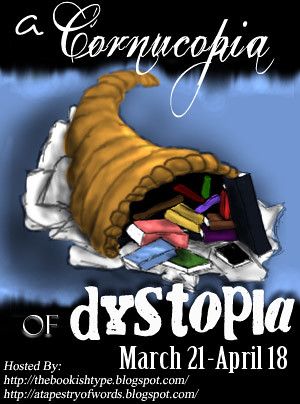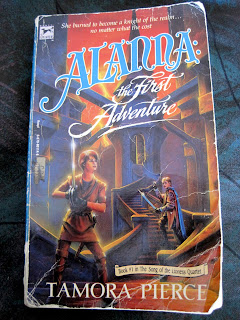Purple Daze by Sherry Shahan, read for my "Read Outside Your Comfort Zone" Challenge, and also for the YA Historical Fiction Challenge I'm participating in. (Thanks to the author for providing a few photos to accompany this review!)
"Purple Daze is a young adult novel set in suburban Los Angeles in 1965. Six high school students share their experiences and feelings in interconnected free verse and traditional poems about war, feminism, riots, love, racism, rock 'n' roll, high school, and friendship.
Although there have been verse novels published recently, none explore the changing and volatile 1960's in America-- a time when young people drove a cultural and political revolution. With themes like the costs and casualties of war, the consequences of sex, and the complex relationships between teens, their peers, and their parents, this story is still as relevant today as it was 45 years ago."
Why is it outside my comfort zone? I've tried a few novels in verse before but never really got into them... I'm not too sure why, perhaps because they're often more sparse and lacking in details than standard novels. I think the few I've read have also been rather emotionally dark and dealt with depressing subject matter. I've never heard of a novel in verse set in the '60s before, though (actually, just generally I think it's a gap in YA fiction) so that particularly interested me about Purple Daze.
Did it win me over? Why or why not? For the most part, yes. It took me a little bit to get into Purple Daze, since there are six main characters, and we jump back and forth between each teen's perspective. I found it difficult to distinguish between each of them at first, but after a while I started getting to know them better. I really enjoyed the letters sent from Phil to Cheryl in particular; I felt that of the characters Phil felt the most real and his voice the most authentic. (It turns out the author based his letters on actual letters she received from an acquaintance serving in Vietnam, so no wonder!)
Despite the fact that there's no central threat (other than the general threat of the war in Vietnam), and thus not really a driving, overarching plot/storyline, the tone and characters are engaging. Instead of a linear progression, we are just given glimpses into brief moments of 1965 for each teen. I had worried at first that I might have to push through this one, but I found myself getting quite caught up in it and nearing the end sooner than I would have expected.
We do see more of some characters' viewpoints (Phil, Mickey, and Cheryl, I thought) than the others (Nancy, Ziggy and Don). I would have liked a few more excerpts from the characters who were given less screen time, since they remained kind of elusive in my mind's eye. I know there were a lot of subplots hinted at (especially involving Ziggy) but because we're only given snippets from each perspective, I was left a little confused about what was going on with some of the characters. There were a few more dots that could have been connected to make their stories more clear and cohesive.
Best aspect? The atmosphere created by Shahan's writing. It's exceptionally evocative of the '60s era, and the richness and boldness of the characters' voices leaps off the pages.
The slang in this book is groovy. Neato, cool beans, hip – can I be any plainer? In other words, it was far out. (Sorry, but how many opportunities will I get to use '60s jargon in a review? Precious few.)
And I really enjoyed the deepening friendship between Cheryl and Phil, which we see almost exclusively through Phil's letters to her from Vietnam. I did wish that we could see some of her letters back to him (and to her other friend, Mickey) but at the same time, it was fun to pick up on the hints through Phil's letters alone and have to guess about what Cheryl had written. Phil's personality really shone through in his letters, both his tough exterior and glimpses of a more sensitive side in his respect for Cheryl, and his gratitude to her for keeping up with the correspondence. Also interesting is Phil's changing relationship with the war, beginning with optimism, turning quickly to discomfort and disillusionment, and then to a harder cynicism towards the end.
And I really enjoyed the deepening friendship between Cheryl and Phil, which we see almost exclusively through Phil's letters to her from Vietnam. I did wish that we could see some of her letters back to him (and to her other friend, Mickey) but at the same time, it was fun to pick up on the hints through Phil's letters alone and have to guess about what Cheryl had written. Phil's personality really shone through in his letters, both his tough exterior and glimpses of a more sensitive side in his respect for Cheryl, and his gratitude to her for keeping up with the correspondence. Also interesting is Phil's changing relationship with the war, beginning with optimism, turning quickly to discomfort and disillusionment, and then to a harder cynicism towards the end.
 |
| The "real" Phil, in Vietnam. |
If I could change something, I would... Change the 'current events' sections, as I didn't think they connected that well with the characters' stories. There were segments every so often that discussed the current events of the time, in paragraph form. While these were informative, I found myself wanting to skim or skip over them and get back to the "real" story of the six teens. They just felt too dry and textbook-like to really engage me, and broke the flow of the narratives.
Also, a glossary of '60s-specific terms would have been helpful. Some of it was understandable from context, but there were a few times that the slang or other references would go right over my head.
Just one more thing I want to mention: I was actually quite disappointed that we don't get more closure with each teen's story. I liked that it chronicled exactly one year in the life of these six individuals, and that the format of the ending mirrors the beginning, but I was left wanting to know more about how each character turns out (especially given the hints of a Cheryl/Phil dynamic). I really wanted to see a reunion of the six at the end!
Would I read more like this book? Yep, I think so. The verse format didn't actually pose as much of a problem for me as I thought it might, once I got used to it. I thoroughly enjoyed the spot-on '60s vibe I got from Purple Daze, and while I would have appreciated more plot than we're given and a centralized storyline, I do think that a novel in verse can pull off a story through "snapshots" of characters' lives more effectively than a novel of standard prose would be able to.
Final verdict: 3 shooting stars. It was difficult for me to rate this one because I don't really have much to compare it to, having not reviewed any other novels in verse yet, so I am ranking it overall. Compared just to other novels in the same format, though, I expect my rating might be a bit higher.
Recommend for: both those who lived through the "flower power" era, and those who wish they had experienced it! Note: there is a fair bit of mature language and content in here, so I'd only recommend this one for older YA readers.
Author's website: http://www.sherryshahan.com/
Author's website: http://www.sherryshahan.com/
Disclaimer: I received this book for review from the author/publisher.
If you haven't signed up yet for the "Read Outside Your Comfort Zone" challenge and would like to, you can fill out the form HERE.































































